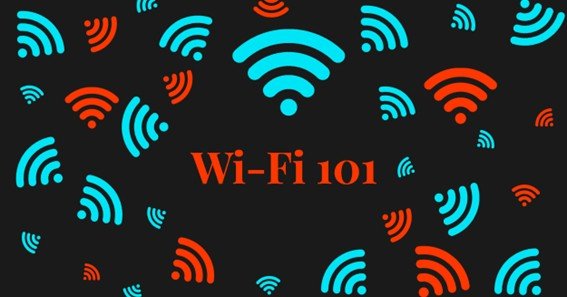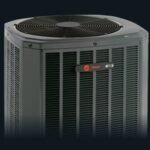When exploring how wireless internet functions, a pivotal question often arises: Wi-Fi works by converting data signals into which of the following? The short answer is radio waves. This core process underpins everything from browsing social media on your phone to streaming movies on your TV. In this blog post, we’ll break down the science behind wireless connectivity, show why radio waves are essential for Wi-Fi, and delve into how this technology seamlessly keeps us connected.
How Does Wi-Fi Convert Data Signals into Radio Waves?
- Digital Data
- Devices such as smartphones, laptops, or smart TVs generate digital data (bits of information).
- This data could be anything: emails, streaming content, or simple web searches.
- Transmitter and Modulator
- Inside a wireless router, a transmitter takes this digital data and modulates it—essentially packaging the information into a form that can be carried over the air.
- The modulator transforms binary code into an analog signal.
- Radio Waves
- Once modulated, the router’s antenna broadcasts these signals as radio waves.
- Radio waves can travel through the air, enabling wireless transmission of information without the need for cables.
- Reception and Demodulation
- Your device’s Wi-Fi receiver picks up these radio waves.
- It then demodulates the signal, converting it back into digital data that your device can interpret—like a web page or video stream.
- Frequency Bands
- Wi-Fi typically operates on the 2.4 GHz or 5 GHz frequency bands.
- These frequencies allow for stable, relatively long-range communication but can be influenced by factors like walls or interference from other devices.
Key Components of a Wi-Fi Network
- Wireless Router
- The router is the main hub that broadcasts the radio waves and manages network traffic.
- Adapter or Receiver
- Devices like laptops or smartphones come with built-in Wi-Fi adapters that detect and interpret incoming signals.
- Access Points (Optional)
- In larger or more complex networks, multiple access points are installed to extend coverage and maintain strong signals throughout a space.
- Ethernet or Broadband Connection
- Routers typically connect to a wired broadband source (e.g., fiber, cable, DSL) to access the internet at large.
- Security Protocols
- Wireless networks use protocols like WPA2 or WPA3 to encrypt data, ensuring secure communication over radio waves.
Advantages of Radio Wave-Based Wi-Fi
- Wireless Convenience
- Eliminates the need for cables, offering seamless access in homes, offices, and public spaces.
- Scalability
- Adding more devices or expanding coverage is often as simple as installing an additional access point or router.
- Mobility
- Users can roam within the Wi-Fi coverage area without losing connectivity, ideal for smartphones or laptops.
- Cost-Effectiveness
- Compared to laying network cables, Wi-Fi’s infrastructure can be more budget-friendly, especially for large or hard-to-wire locations.
- Easy Upgrades
- Upgrading to newer Wi-Fi standards (e.g., Wi-Fi 6 or Wi-Fi 6E) often just requires a router replacement and compatible devices.
Challenges and Considerations
- Signal Interference
- Radio waves can be obstructed by walls, microwaves, or other electronic devices. Proper router placement can mitigate issues.
- Security Risks
- An unsecured wireless network can be vulnerable to unauthorized access. Strong passwords and updated encryption protocols are essential.
- Bandwidth Sharing
- Multiple devices can strain network resources if they simultaneously engage in high-bandwidth activities like HD streaming or large downloads.
- Range Limitations
- While radio waves can travel through various materials, the signal weakens as the distance between the router and the device increases.
- Network Congestion
- In densely populated areas, overlapping Wi-Fi channels or multiple routers operating in the same frequency band can cause slower speeds.
5 Frequently Asked Questions (FAQs)
- Q: Wi-Fi works by converting data signals into which of the following?
A: Wi-Fi converts data signals into radio waves, allowing wireless communication between devices and routers. - Q: How do I improve my Wi-Fi range at home?
A: Consider using Wi-Fi extenders or mesh networking systems, and position the router in a central, elevated location away from thick walls or metal objects. - Q: What’s the difference between 2.4 GHz and 5 GHz Wi-Fi?
A: 2.4 GHz offers a longer range but lower speeds, while 5 GHz provides higher speeds over a shorter range, typically experiencing less interference. - Q: Can someone hack my Wi-Fi if it’s password-protected?
A: Although less likely, vulnerabilities can still exist. Use a strong, unique password and updated security protocols (WPA2/WPA3) to reduce risks. - Q: What is Wi-Fi 6, and how does it compare to older standards?
A: Wi-Fi 6 (802.11ax) offers faster speeds, better handling of multiple devices, and enhanced energy efficiency compared to previous standards like Wi-Fi 5 (802.11ac).
By understanding that Wi-Fi works by converting data signals into which of the following? Radio waves, you gain insight into the science behind the wireless world we rely on every day. From browsing the web to streaming movies, these invisible signals power a level of connectivity once considered science fiction—making our digital lives more flexible, mobile, and convenient.










